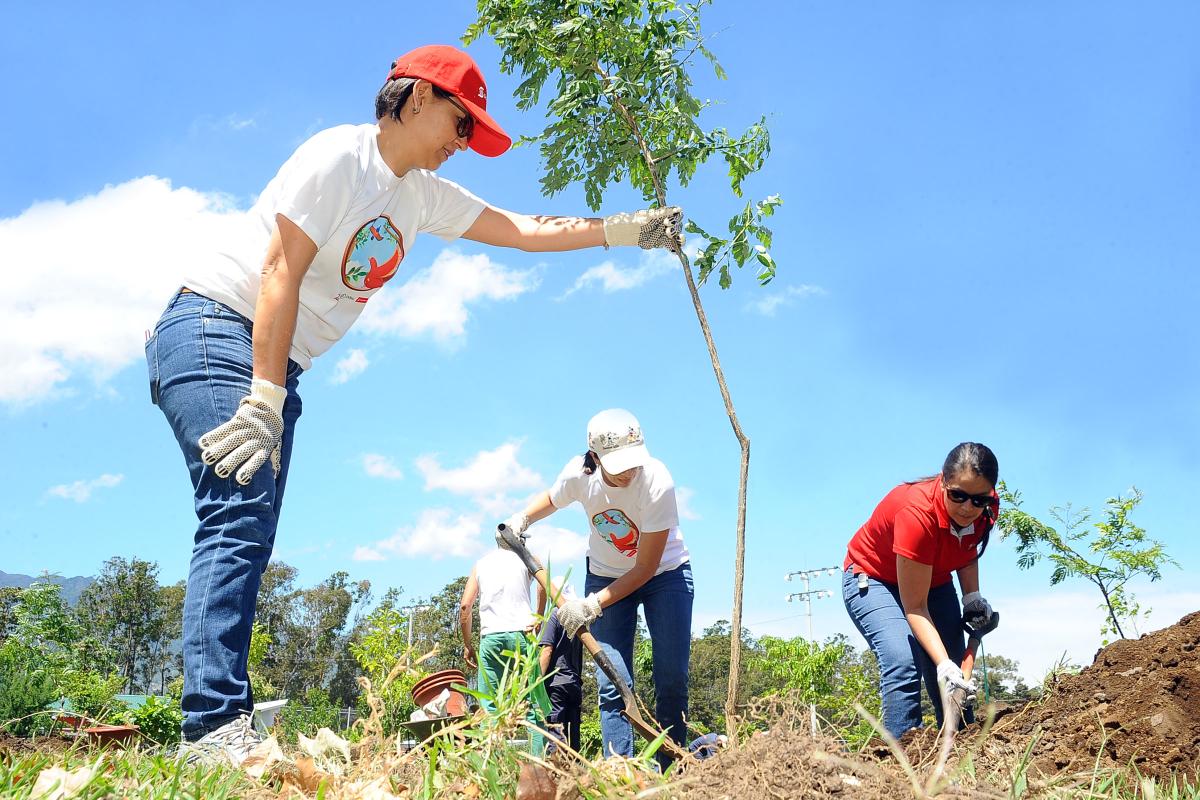Scotiabank CSR Perspectives: La Sabana Park Restoration Project in Costa Rica

An inside perspective with Kathy Araya who spearheaded La Sabana Park Restoration Project in Costa Rica, Regional Marketing Director from Central America, Scotiabank Costa Rica
Protecting the environment requires long-term thinking, planning and a vision. At Scotiabank, we recognize that a better future is intrinsically linked to the well-being and health of our plant. Scotiabank is committed to reducing its impact on the environment and proud to be involved in the restoration of La Sabana Park in San Jose, Costa Rica. The initiative to restore the park’s local biodiversity and provide members of the community with a green space has been led within the Bank by Kathy Araya, Regional Marketing Director.
The following interview is part of Scotiabank’s new Corporate Social Responsibility (CSR) Perspectives series. The series will highlight various initiatives at the Bank through the lens of employees in relation to Scotiabank’s CSR priorities and commitments. Read how the work of Scotiabankers is creating meaningful opportunities for the Bank’s stakeholders.
How are you advancing Scotiabank’s commitment to the environment in Costa Rica?
Since 2008 Scotiabank Costa Rica has been in charge of an ecological restoration in La Sabana park in the middle of San Jose, Costa Rica, a place where people go to be active. The park covers 72 acres and aims to have more than 8,000 trees, but previously a majority of the trees were non-native species. Based on a study that Scotiabank commissioned, we learned that these non-native species were negatively impacting the environment and biodiversity of the park. Our goal is to replace 3,200 non-native species by 2019 with 5,000 new native trees; to date 3,791 trees have been planted.
Why is this project important to the environment in Costa Rica?
Costa Rica accounts for 5% of global biodiversity but La Sabana park had too many invasive species - good for lumber, but not native to Costa Rica. Without native trees, animals had left and the park had become a “green desert.” Even though the new trees are still small, the birds and animals are coming back, and we’ve helped change the environment and increase the biodiversity of the park.
Why would restoring a park be a priority for a bank?
In Costa Rica, the environment is very important; we are definitely a green country. La Sabana’s green space is important to our customers and to us. La Sabana is right in front of Scotiabank’s main building, so restoring the park was a great way to demonstrate our commitment to the environment and our community.
We want to engage in environmental initiatives that are important to our customers and the bank. The park restoration was a good way for us to do that. Now, together with the government and local partners, we are continuing to make that happen.
Why is protecting the environment important to you personally?
It’s very important to me personally, but I think it’s actually important for all of us, including Scotiabankers and our customers. The environment is for our future customers — for our children, for our grandchildren. Taking care of the environment will be our legacy for future generations, and I’m honoured to be involved in building that legacy.
How does the environment connect with Scotiabank’s CSR Strategy Better Future, Better Off?
Scotiabank believes that every customer has the right to become better off. That’s why we bank. The well-being of customers, communities and the environment are all connected, so our work at La Sabana is one way that we are acting on that belief. By investing in the communities where we live and work through environmental initiatives, we help protect the ability of present and future customers to become better off — resulting in what we believe will be a better future for everyone.
Learn more about Scotiabank's project and Kathy's interview here
